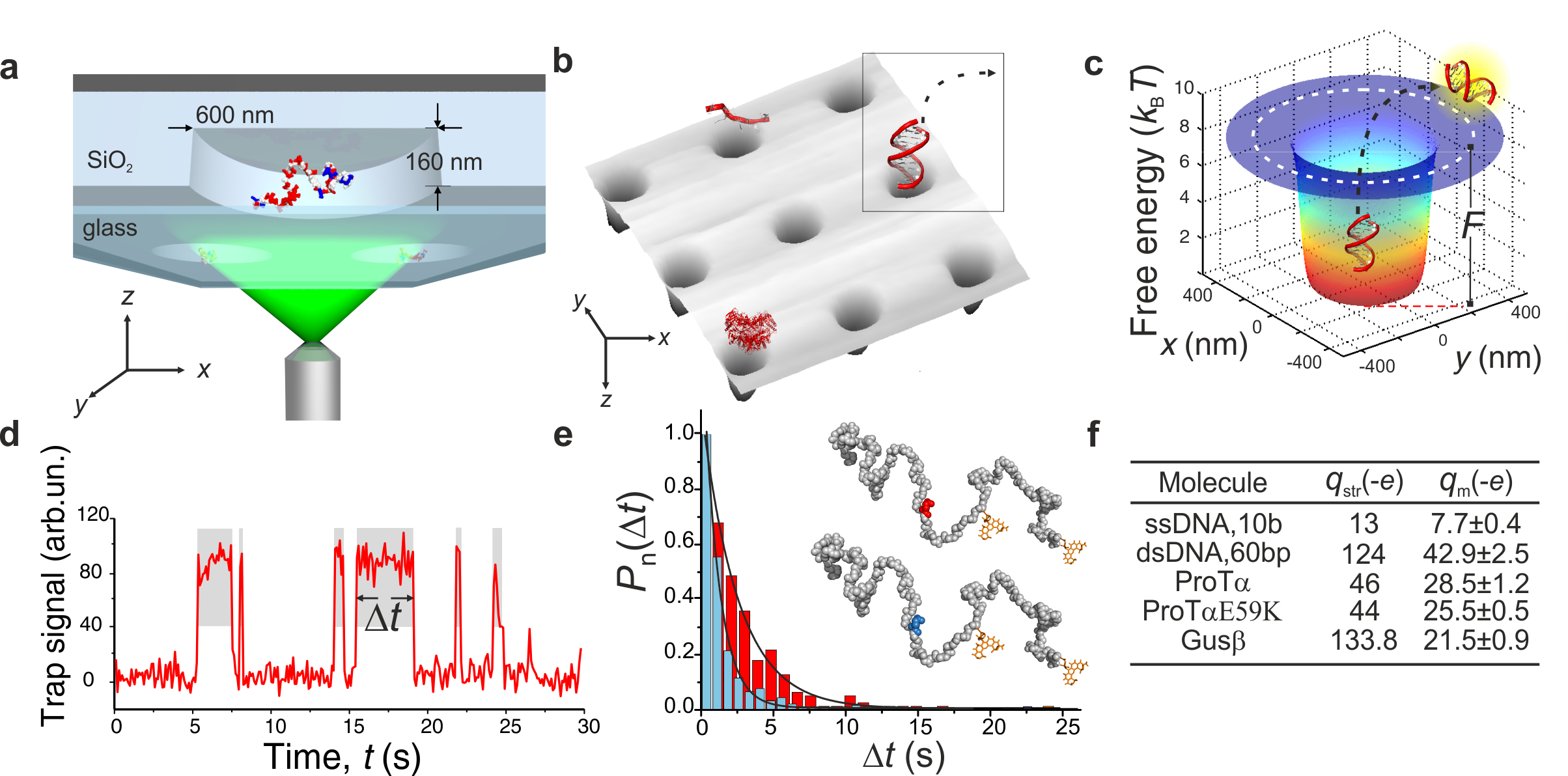Single-molecule electrometry
Electrical charge is a fundamental property of biomolecules, strongly influencing their function [1] and stability. We demonstrate for the first time a high-precision (<1e), measurement of the electrical charge of biomolecules in solution. The method is based on parallel, external field-free trapping [2] at an unprecedentedly low estimated sensitivity of yoctomoles (1-10 molecules).
Our single molecule trap is created in a fluid-filled gap between two charged walls. Nanoscale patterning of one of the surfaces leads to a modulation of the local electrostatic potential, creating a deep thermodynamic potential well for a like-charged entity (Fig.a-b). In our new method “Escape Time Electrometry” (ETe) [3] we show for the first time stable trapping of biomolecules in solution, for tunable timescales ranging from hours to milliseconds. The depth of the well, F, experienced by a charged molecule is linearly proportional to its effective charge qm (Fig.c). A molecule undergoing Brownian motion will reside in a trap for a time (tesc) given by Kramer’s analytical expression, tesc=trexp(F/kBT), where tr is a relaxation time that depends on the diffusion coefficient of the molecule. When occupied by a fluorescently-labelled molecule the optical intensity of the trap region is high (Fig.d). The duration of the intensity bursts (Dt) follows an exponentially decaying probability distribution Pn(Dt), which is fitted to extract tesc, yielding information on the well depth and thus directly giving the effective charge qm. Finally, qm can be theoretically modelled and related to the molecule’s known structural charge (qstr); the table in Fig.f summarizes a few representative results.

The measured charge of DNA molecules is in remarkable agreement with existing theoretical predictions [4] and suggest that ETe can serve to readout the inter-nucleotides spacing of a nucleic acid molecule or polyelectrolyte. The study of the enzyme Gusb suggests substantial regulation of the structural charge in a globular molecule [5], while our measurements on ProTa, a disordered one-dimensional polypeptide, provides unique insight into the charge renormalizing behavior of short, strongly charged segments within the molecule. Crucially, the exponential dependence of tesc on the charge of the molecule permits us to distinguish between two ProTa variants that differ by a mutation of a single amino acid (E59K, 4% of the structural charge) (Fig.e). The Electrometry measurement can also be performed on a single molecule in real time, with the potential of detecting charge fluctuations, making ETe a new tool for ultrasensitive, rapid structural studies on biological macromolecules in the fluid phase.
[1] Perutz, Science, 1978, 201:1187-1191. [2] Krishnan et al., Nature, 2010, 467:692-695. [3] Ruggeri et al., 2017; Nature Nanotechnology, 2017, 12:488-495 [4] Manning, Journal of Chemical Physics, 1969, 51:924-& 492. [5] Ninham, Parsegian, Journal of Theoretical Biology, 1971, 31:405-428